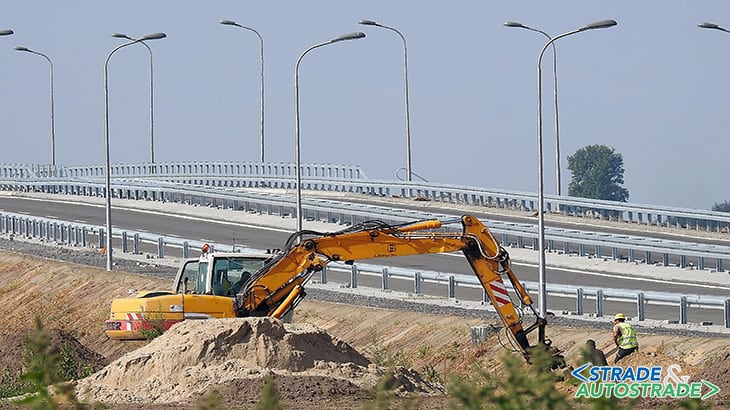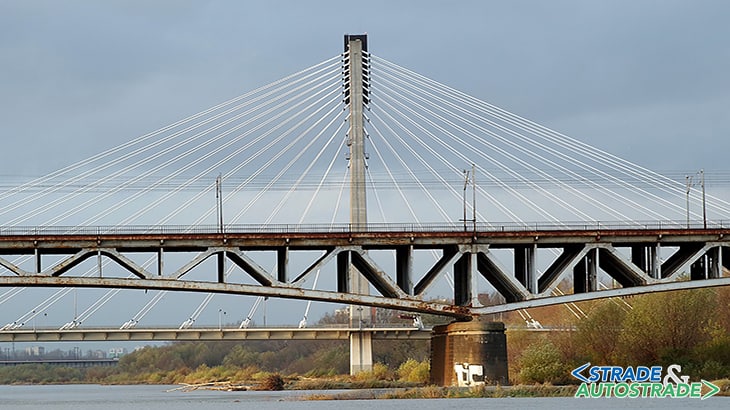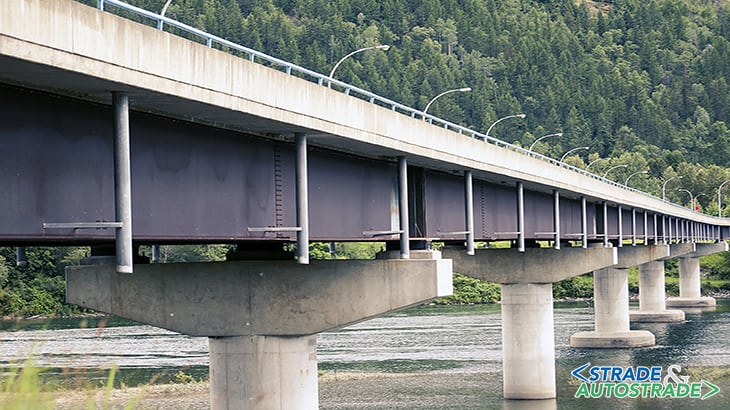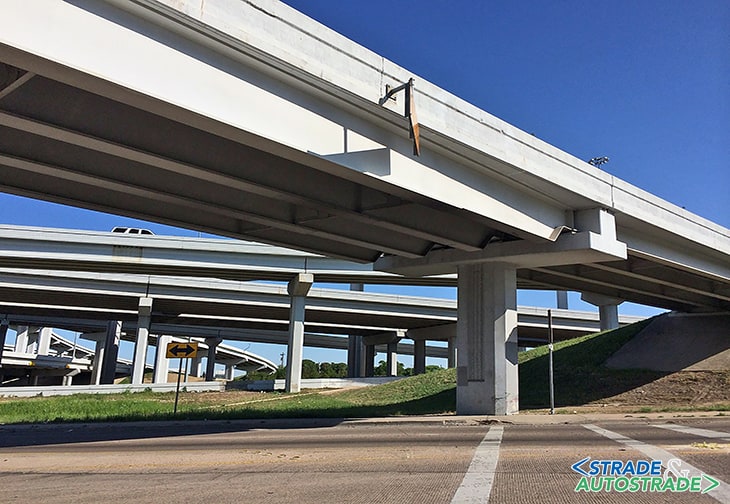New guidelines for infrastructure monitoring and maintenance ![]() Per la versione in Italiano: https://www.stradeeautostrade.it/its-smart-road/nuove-linee-guida-per-il-monitoraggio-e-la-manutenzione-delle-infrastrutture/
Per la versione in Italiano: https://www.stradeeautostrade.it/its-smart-road/nuove-linee-guida-per-il-monitoraggio-e-la-manutenzione-delle-infrastrutture/
With the recent signature by the Minister of Infrastructures and Transport on the Implementing Decree (of the Decreto Genova), AINOP officially begins National IT of Public Works for monitoring of works in Italy and interoperability of administrations involved.
Infrastructure maintenance plays a significant role importance also in consideration of the high costs required to ensure an appropriate level of their safety, which for their impact on the country’s economy and quality of life of citizens.
They are complex works, subject over time to alterations of their characteristics that can affect performance if no adequate action is taken and continues checking and maintenance activities.
Research on materials contributes to this goal that new construction techniques, but also applying new maintenance strategies that make use of new tools and systems with a broad use of ICT technologies (Information & Communication Technology).
Especially the modern ones Structural Health Monitoring (SHM) systems perform a primary role in being able to monitor continuously the state of health of the structure, allowing a better and efficient maintenance and, above all, reporting in advance the conditions they can bring to a failure/collapse of the structure.
It is in these terms that MIT is working to ensure not only Ansfisa, but all infrastructure managers roads operate by adopting the most advanced methodologies and applications.

The important role of SHM systems
As for the civil engineering sector, it is being assisted to an increasing use of engineering results of maintenance in the industrial sector, with particular emphasis reference to SHM systems. In fact, they play a role today of the highest level operating as “support systems for critical decisions ”for maintenance.
They can employ devices (sensors/actuators) and devices positioned on the ground, but also make use of satellite systems or aircraft (drones). I can to deal with various processing techniques (recently yes are also applying those of AI-Artificial Intelligence), numerous quantities of local information to which they can be added those taken from other databases (use of Big Data).
The use of non-terrestrial systems is intended for monitoring of large works or for large areas on which they reside more structural works (bridges, buildings, etc.). In particular, those drone-based systems are mainly used to automate visual inspections.
The complexity of an SHM system is linked to the nature and size of the work to be monitored and the need for constant monitoring. Indeed, there may be cases where just a few sensors connected to a simple acquisition, analysis and presentation device of the data to perform punctual checks and referring to a precise time interval.
The introduction of SHM systems can help identify, in advance, design or execution errors, check the state of health of the structure also on the basis of the trend dynamic load to which it is subjected (fatigue work), locate problems/defects, produce the necessary alarms and, also if there is still a lot of work to do, evaluate the remaining life work.
This entails an evident efficiency of the expenditure for ordinary maintenance, significantly reducing in the long run, extraordinary maintenance. Typically the maintenance strategy adopted in civil engineering yes mainly based on the disclosure of existing damage that has emerged during visual inspections along a predetermined interval of time (some years).
SHM systems allow the adoption of a new strategy based on continuous monitoring and the ability to automate visual inspections. Obviously operator intervention human will remain fundamental, but being able to count on the important support, aid of innovative technological tools.
The realization of such a system requires a multidisciplinary effort, because it is not just about positioning sensors/actuators and collecting and processing data, but knowing the structural model of the work itself, the stresses, the mechanisms of degradation and the criteria for assessing its condition.
Monitoring the health status of an engineering structure civil, like that of a bridge, involves evaluation the effect of physical, mechanical actions and chemical that affect its durability (overloads, wind actions, cycles natural thermal freeze-thaw, chemical agents environmental as those that cause corrosion of reinforced concrete reinforcement from carbonation/chlorides, earthquakes, explosions, fires, etc.).
For new builds most sensors/actuators can be submerged directly (made ” embedded “) in the elements of the structure, giving life to that which can be considered an SMS (Smart Materials/Structure ). For the buildings present sensors/actuators are typically placed on existing elements.

They are numerous the projects in the world that aim to build new second suspended infrastructure the ” smart ” fees now consolidated in many other areas of technology. A smart bridge built with the addition at the design stage of sensor networks, it will make the infrastructure is a cyber-physical system.
The cyberphysical model consists of simulating in a digital environment parallel, the temporal evolution of the structure on the basis of the data collected and to be able to predict its behavior in different future phases, under the stress of different loads and environmental conditions (e.g. accidents, earthquakes, etc.) with different level of probability also by simulating the performance of the structure in relation to the different interventions of executable maintenance.
All this is already a reality in others Countries. The necessary technological tools are all available and are in line with the name of “Industry 4.0”. Thing should we do then? There is no doubt: you have to plan systematically preventing infrastructure.
With this approach can be expected every new infrastructure and so also the extraordinary maintenance interventions must introduce a diagnostic and prevention system of risky events.
Architecture of a SHM system
A SHM system can employ system devices and devices on the ground (terrestrial SHM system) and/or sensors housed as payload on satellites for Earth Observation or on planes (use of helicopters or drones).
The biggest limit of the mode from satellite lies in the fact that nature and timing data acquisition (even several days) only allow static monitoring. In other words, they succeed evaluate well the phenomena of localized deformation but not you can, for example, evaluate the vibrations to which the structure is subject.
For these reasons, recently there is a tendency to integrate them with sensors/actuators on the ground, or with terrestrial SHM systems. The intention of the Italian government to have it carried out is recent to ASI (Italian Space Agency) and CNR (National Council Research) a satellite system for monitoring of the country’s infrastructure.
For air systems, the solution based on SAPR (Remote Piloted Aircraft System), which makes use of APR (drones), is the one that is emerging most. Their payload sensors can be video cameras or high definition thermal cameras , multispectral sensors, Lidar (Laser Imaging Detection and Ranging).
The advantages and limitations of these systems are largely common to those of the satellite type: often used only for visual inspections in support monitoring activities with or without terrestrial SHM systems with which they can be well integrated. With reference to systems terrestrial, it must be said that they can be made to carry out both static and dynamic monitoring.
Also the new National Computer Archive of Public Works (AINOP) established by the Genoa Decree and developed by the MIT has become a fundamental element in guaranteeing completeness and full sharing of information related to a public work in general.
It is therefore essential that this platform integrates perfectly in infrastructure monitoring processes, with a continuous exchange, through interoperability and cooperation application of the project technical, economic and administrative data, of the state and degree of efficiency, of the activity ordinary maintenance, and that the acquisition processes of the data of interest takes place according to a structured architecture in five macro-elements:
- sensors applied to objects to generate data;
- connectivity to transmit data;
- cloud and edge digital infrastructures;
- Big Data platforms for data collection combined with tools predictive based on artificial intelligence or algorithms of machine learning;
- mobile or web applications to use the data.

Open and Big Data and their use
As for the technological development of SHM systems, certainly the use of Bigs will be widespread for complex structures Data and weak AI (e.g. artificial neural networks).
Here they open several issues of no small importance, first of all the need to promote new solutions to protect citizens in order to implement an increasingly effective public Big Data policy and the digital economy.
The transversal nature of the problems of the digital economy led the Guarantor Authority of the Market Competition (AGCM), the Authority for Guarantees in Communications (AGCOM) and the Guarantor for the protection of data to necessarily implement coordinated actions with a view to protection, management and access to personal data.
The three authorities have launched a fact-finding investigation on Big Data, from which the Lines originated Cooperation Guide and recommendations of policies that were published on July 2nd last.
The investigation aimed to deepen the implications in terms of privacy, regulations consumer protection, antitrust measures and, above all, the theme of management Big Data and the measures to be taken in compared to Big Tech.
A policy to protect the various actors
In order to make the relationship between users and operators “equal” digital, a policy is needed to establish how inform adequately, promptly and promptly the user/consumer regarding purposes and rules of use of the data transferred for the service offered, as well as allowing to consciously exercise their choices.
This policy will have to consider data portability and mobility between the different platforms through the adoption of standards open and interoperable with a view to developing competitiveness in the various areas of economic exploitation of the data ea user/consumer protection.
It is essential to ensure that digital platforms do global measures to increase transparency in terms of proliferation of data and avoid those actions that can make these paltforms more and more powerful on the market up to being able to determine restrictive effects of competition.

No less “equal” must be the relationship between the big ones digital platforms and other operators who use them platforms by implementing a policy aimed at making more transparent the criteria by which the data are analyzed and processed in such a way as to guarantee fair trading on the value of the data and its commercial use.
It is essential that the opening of raw data and their reuse, do not go to the detriment of the owner of that data. Infact i data can be aggregated with each other providing an interpretation general for the benefit or to the detriment of a subject. From here the need for more precise rules on the use and on the modalities of Open Data.
The ongoing digital transformation puts us in front of “dematerialisation” economic relationships and processes which, if well managed, in compliance with antitrust rules, management and data protection, will lead us towards the realization of an economic-social structure capable of generating greater equity.
However, it is necessary to make people understand that digitization is a fundamental element for the growth of each country, adopting shared strategies and methods to simplify the present and planning the future.
![]() Per la versione in Italiano: https://www.stradeeautostrade.it/its-smart-road/nuove-linee-guida-per-il-monitoraggio-e-la-manutenzione-delle-infrastrutture/
Per la versione in Italiano: https://www.stradeeautostrade.it/its-smart-road/nuove-linee-guida-per-il-monitoraggio-e-la-manutenzione-delle-infrastrutture/

